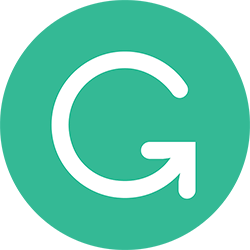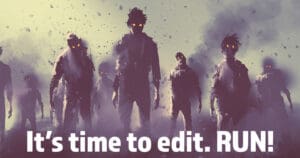Estimated reading time: 5 minutes
What follows is no more than a rundown of my writing life. It’s not (necessarily) advice and it’s certainly not a put-down of other methods, apps, or tools. I’ll have a more philosophical take on my process down the road; this is more about tools and habits.
Hardware
I write on a 2021 iMac when I’m home and a 2017 MacBook Pro when I’m out and about. Rarely do I ever write on my phone, but I do use it for the occasional note when I think of something I don’t want to lose. My preferred keyboard is the Apple Magic Keyboard with a number pad (mine predates Touch ID, so I keep the one that came with the iMac for its fingerprint sensor). The Apple Magic Trackpad is fantastic, and I don’t miss using a mouse.

An LG Ultrawide monitor sits to the left of the iMac, giving me enough total screen space to open four or five documents. To the right of the iMac is the box shared by our three cats: Geddy (pictured), Alex, and Neil.
Software
I grow restless with software. If you’ve seen a recommendation for writing software, I’ve probably tried it. About ten years ago, I landed on Scrivener, and though I tried other things afterward, I always went back. A lot of writers swear by it. I did, too.


Ulysses came into my life a year or so ago. I’m a Mac user, and I want two things from any software I use: clean integration with the environment (MacOS, iCloud) and adherence to UI best practices. That means I want to be able to save documents to iCloud without any hassle, and I want the software to look and feel like Mac software. Scrivener, for all its laudable strengths (and it really is great software), fails at both. Ulysses gets it right.
Tools


Perhaps the most controversial tool I use is Grammarly. I know, I know; it’s not always right. I consider myself a good editor. I know the important spelling and grammar rules and when and how to break those rules. Grammarly eliminates the obvious mistakes, the slips of the fingers, to save me time. While I would never advocate for its use as a replacement for a proper human editor, I think it’s a great tool to start with.
Every writer needs a good dictionary and a good thesaurus. Power Thesaurus is both in one excellent interface. For a more traditional dictionary, I trust Merriam-Webster.
Left to my own devices, I will spend hours agonizing over character, place, or object names—a massive waste of time. Fantasy Name Generators to the rescue.
I read The Writer and Writer’s Digest, though both do a great job of largely ignoring genre writing in favor of “literary” work.
Music for Writing
Some people need to write in absolute silence, but I can’t. I suffer from mild tinnitus, and I need something in the background to stop it (it doesn’t take much). I can’t write if I’m listening to anything with words, though. The part of my brain that processes lyrics, even in background music, goes to war with the part of my brain trying to come up with words to write.
Two playlists handle all my background needs. Because you may not be an Apple Music user, I’ll offer a tip rather than link to them directly. The first playlist is called “Ambient,” and I created it with a few artists of that genre and then added artists that Apple Music suggested. The Candlepark Stars, Hammock, and Aphex Twin got me started. This playlist is loaded with wonderful melody and instrumentation, and it never overpowers the room. The overall time is 2.9 days, so I rarely get distracted by a repeat in a single writing session.
The second playlist is called, appropriately, “Instrumentals While I Work.” The overall length of this one is 10.4 days—almost 3,000 songs. The seeds were Maybeshewill, God is an Astronaut, and Animals as Leaders. The vibe here is rooted in rock, metal, and electronica. The artist count stands at 85, but I add a new one every now and then as I get more recommendations.
Habits
I don’t let anyone read my stuff until I’ve done at least a few drafts. I share ideas only with my wife. It’s not that I’m paranoid or that I’m afraid someone will rip off an idea. I find that talking about works in progress actually gets in my way and pushes me off track.
I don’t devote a certain time of day to writing. I’ve tried all the advice—get up early, stay up late, do the Pomodoro method, whatever—and none of it sticks. Writing happens when it happens. It rarely happens in the early morning, and I don’t stick to a schedule.
I do keep track of my plans and progress in Excel. I record the days I do or don’t write, the daily word count, and most importantly, the monthly schedule. I’ve planned out the next three years of projects, and I use the monthly schedule to ensure I stay on pace.
I do outline. My thoughts on outlining require far more explanation than I can give here. Suffice it to say, when the outline looks like a draft, there’s little difference between a plotter and a pantser.











